The past year has seen a resurgence of grassroots mineral exploration worldwide for a wide range of precious, base and industrial metals. Below is a quick look at four juniors with active programs.
ASCOT RESOURCES
Vancouver-based junior Ascot Resources (TSXV: AOT; US-OTC: ASOLF) has been exploring since 2007 in one of the world’s hottest high-grade gold camps: the Golden Triangle region of northwestern British Columbia.
The Derek White-led company’s flagship Premier gold project is in the southern portion of the Triangle, north of Stewart, B.C., in an area with at least four past-producing mines. Ascot has focused most of its attention on Premier since 2014 and has spent $40 million in the region since 2007.

A drill site at Ascot Resources’ Premier gold-silver project, 20 km northeast of Stewart in northwestern British Columbia. Credit: Ascot Resources.
Ascot has carried out 118,800 metres of drilling in 379 holes in 2017 in a prospective corridor that includes the Premier, Silver Coin, Big Missouri, Martha Ellen and Dilworth targets, with an aim of following up on high-grade targets from previous drill programs, including the newly discovered Ben and Prew subzones in the Northern Lights area.
Assays from the final 72 holes should be in hand by year-end, leading to a new resource calculation.
ARGENTINA LITHIUM & ENERGY
Vancouver-based Argentina Lithium & Energy (TSXV: LIT; US-OTC: PNXLF) is part of the Grosso Group of companies and is led by president and CEO Nikolaos Cacos.
Its primary focus is its Arizaro lithium project in northwestern Argentina’s Salta province near the middle of the rich “Lithium Triangle” that stretches across Argentina, Chile and Bolivia, and accounts for half of the world’s lithium production.

Argentina Lithium & Energy Corp.’s Arizaro lithium brine project in northwestern Argentina. Credit: Argentina Lithium & Energy Corp.
The company says the “hyper-arid” Salar de Arizaro is the largest salar in Argentina and the third largest in the Lithium Triangle.
Argentina Lithium has an option to acquire a 100% interest in the 205 sq. km Arizaro property in the central part of the Salar de Arizaro at an elevation of 3,600 metres by paying $6 million in stages, spending $4.2 million on project expenses over four years and issuing 2.5 million shares.
In mid-2017, Argentina Lithium drilled two holes in the Central claim block and another to the south, with the Central block holes finding minor brine at up to 356 metres’ depth, and up to 257 mg per litre of lithium and 14,653 mg per liter of potassium.
It says the hole depths were limited by equipment and couldn’t reach an aquifer, but the deepest hole (ARI-1) ended in promising sand units.
Next, a new geophysical program will test for even deeper bodies, and there may be follow-up drilling based on the geophysical results.
FIRST COBALT
Trent Mell-led First Cobalt (TSXV: FCC; US-OTC: FTSSF) has been a market darling of late, with its share price doubling over the past three weeks to $1.40 at press time, with cobalt prices strengthening as investors recognize cobalt’s growing role as a key technology metal.
On Dec. 1, First Cobalt merged with CobalTech Mining, with CobalTech shareholders receiving 0.2632 of a First Cobalt share for each CobalTech share held, and a similar arrangement for CobalTech warrants.
First Cobalt ranks as the largest landowner in the iconic Cobalt camp of northeastern Ontario, controlling over 100 sq. km of prospective land and 50 historic mining operations, as well as a mill and the only cobalt refinery in North America that makes battery materials.

First Cobalt’s Frontier cobalt property in northern Ontario’s Cobalt mining camp. Credit: First Cobalt.
First Cobalt began drilling in the Cobalt camp this year and says it wants to build shareholder value through discovery and growth opportunities.
Earlier in the year, First Cobalt had scouted out cobalt in the Democratic Republic of the Congo, but has since cooled on the idea and refocused its energy on Ontario’s Cobalt camp.
The company also added an Australian listing in late November, trading with the ticker FCC.
HARTE GOLD
Toronto-based Harte Gold (TSX: HRT; US-OTC: HRTFF) is powering ahead at its wholly owned Sugar Zone gold property in White River, Ont., 80 km east of the Hemlo gold camp.
Earlier this year the Stephen G. Roman-led junior completed a pivotal 70,000-tonne bulk sample that was processed at Barrick Gold’s (TSX: ABX; NYSE: ABX) Hemlo mill and generated $27.7 million in proceeds.
Harte is permitting commercial production for the Sugar Zone deposit, and with mine construction getting underway in July 2017.
The company is targeting first production in the third quarter of 2018.

A crane on-site for mill construction at Harte Gold’s Sugar gold project in northern Ontario. Credit: Harte Gold.
It expects to operate Sugar Zone as a 540-tonne-per-day underground operation, producing 50,000 oz. gold a year, over an initial eight-year mine life.
At last count, the Sugar Zone holds an indicated resource of 1.1 million tonnes grading 8.41 grams per tonne for 302,000 contained oz. gold, plus an inferred resource of 417,000 tonnes at 7.13 grams gold 95,000 contained oz. gold.
Harte is still exploring its property, with step-out drilling and regional work intercepting more high-grade gold.

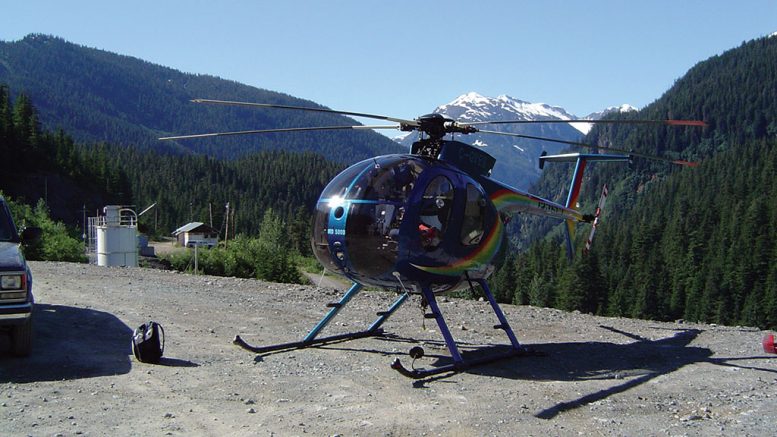
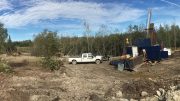
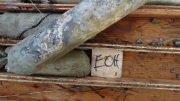
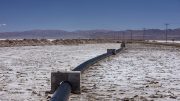
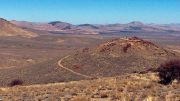
Be the first to comment on "Exploration Snapshot: Four junior explorers with active programs"